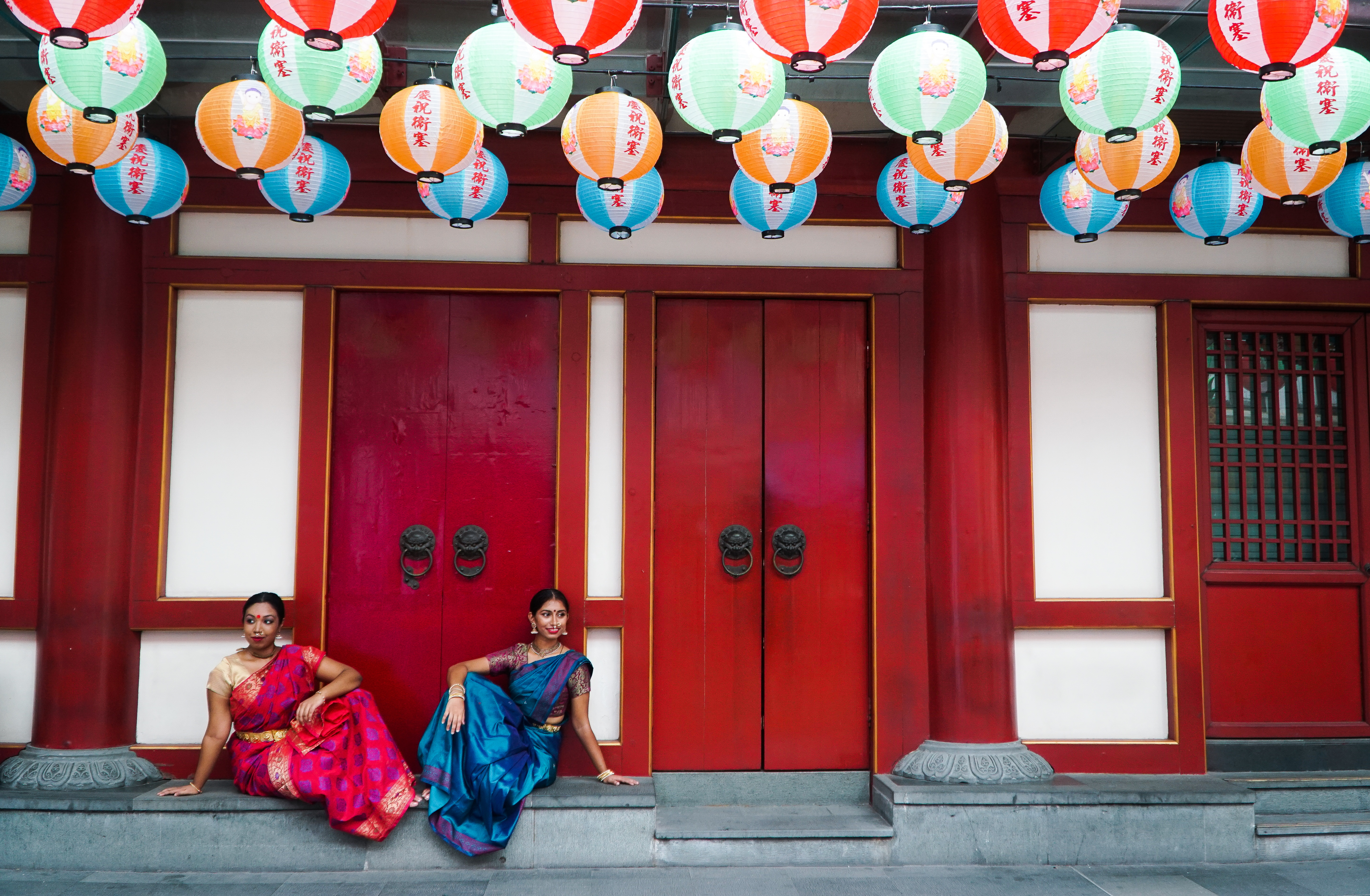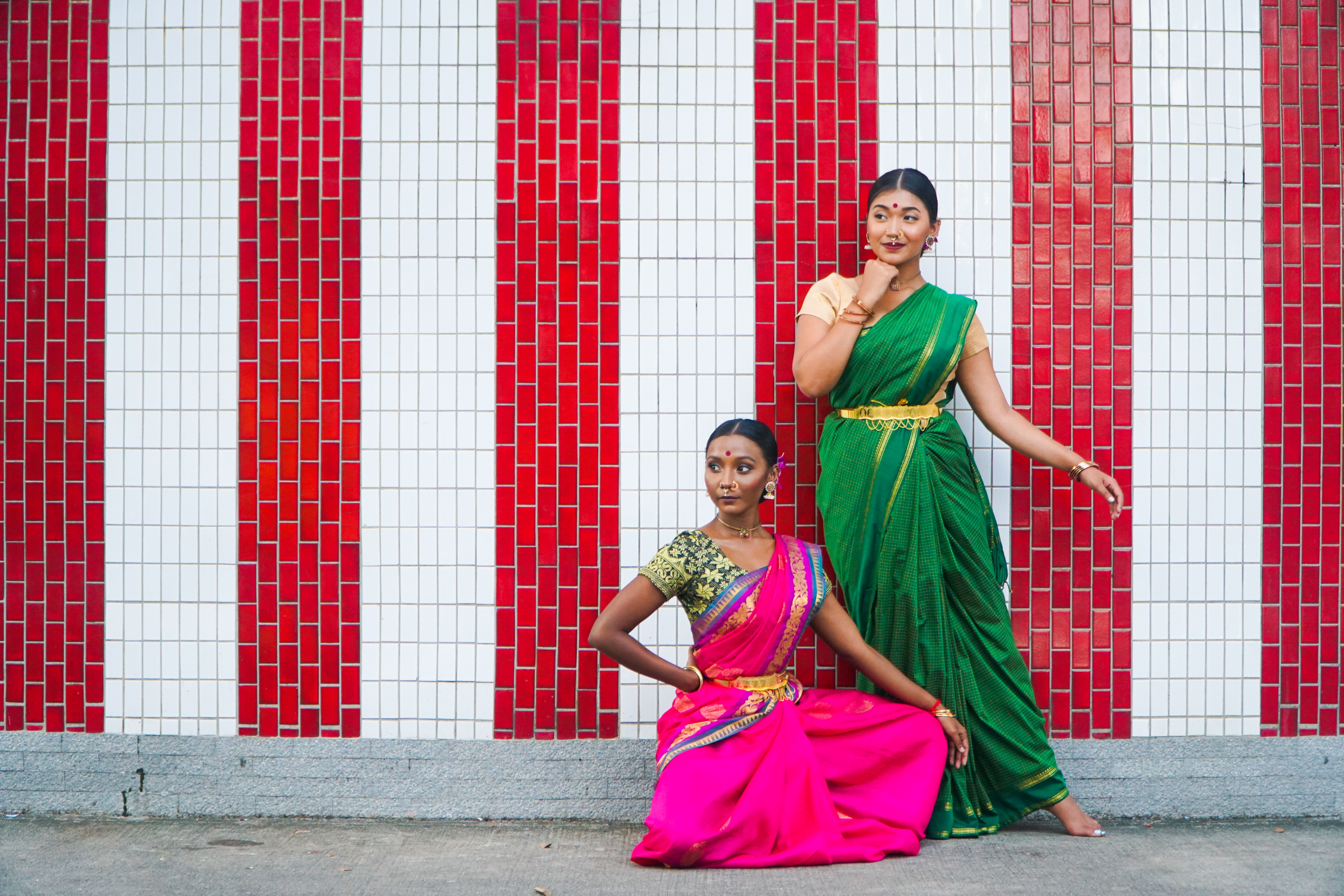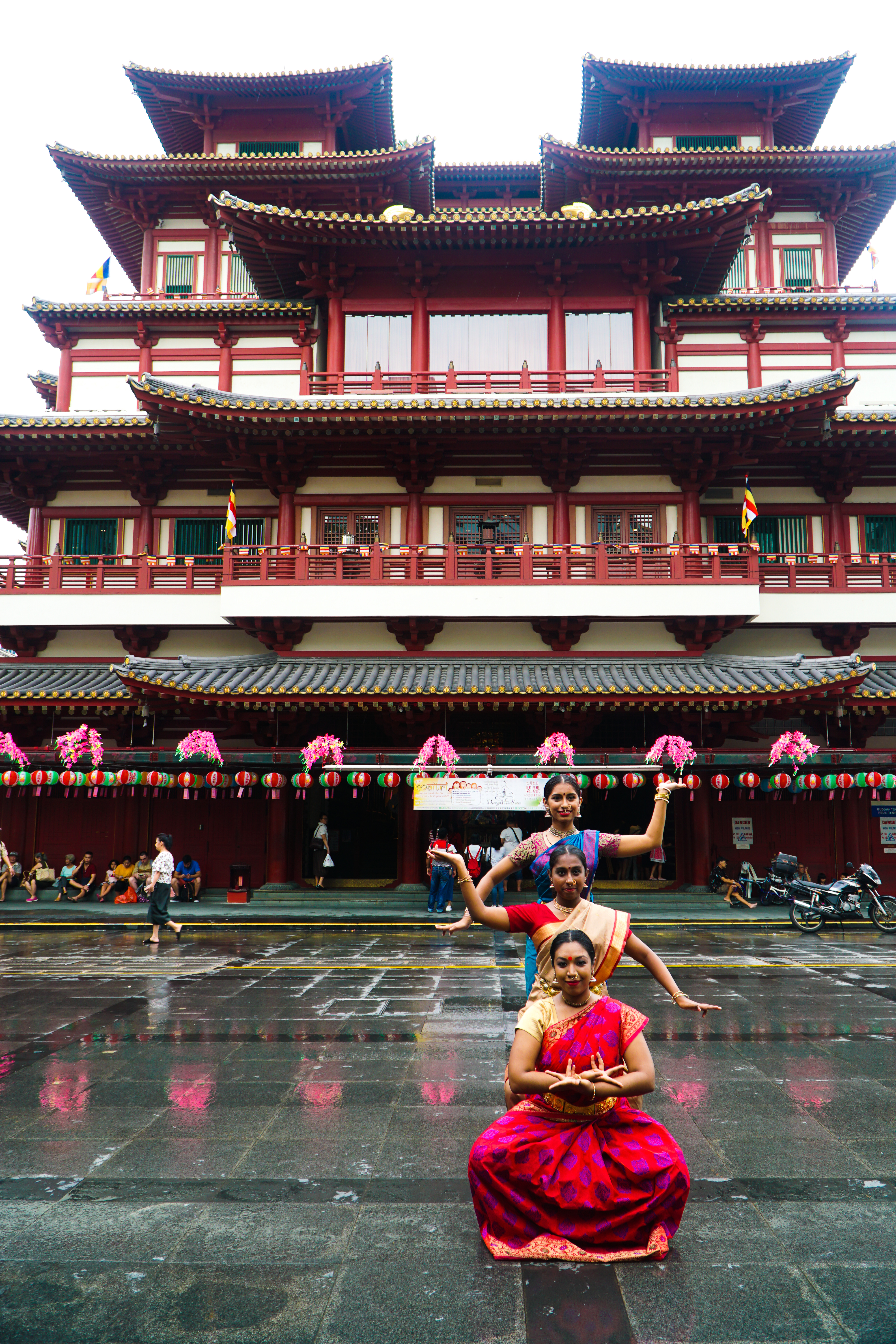Bhaskar’s Arts Academy’s upcoming dance production Singai Sathir takes the traditional Bharatnatyam repertoire on an experimental journey on June 9 and June 10.
Bharatnatyam originated from the term Sathir as early as the 6th century. Singai Sathir – the dance performance, brings new expressions intertwined with local cultures and traditions, while still retaining its original structure and form. The Singapore performance features 11 dancers and 10 musicians.
Originally, unmarried women called Theva Dasikal, who dedicated their lives to the service of God, performed the Sathir dance. These women were highly spiritual and were well respected. Although the art faded for a while, Sathir eventually emerged as Bharatnatyam, and along with the name change came a status of respect.
Now, under the artistic direction of cultural medallion recipient Santha Bhaskar, Bhaskar’s Arts Academy explores future possibilities, drawing on various elements of the little red dot, be it in the literary, cultural or artistic forms, and emerges with a unique Singaporean identity.
Calling the performance as a tribute to the origin and a humble homage to all Gurus and practitioners of this art, Santha Bhaskar, Artistic Director/Chief Choreographer of Bhaskar’s Arts, stole some time to talk to Connected to India.
Talking about the changes Bharatnatyam is currently undergoing, she said, “In the world of Bharatanatyam, there are significant currents of influence flowing from different art forms. In this era of technology, artists are exposed and inspired to try new moves, and new ideas to communicate or to connect to express their ideas. More collaborative productions are performed. Changes happen not intentionally but naturally. There are no set parameters for innovation. This art has an inbuilt mechanism to adapt and accept changes according to time and needs. Bharatanatyam in Singapore embraces the diversity and multiculturalism remembering the roots and our history.”
“The traditional Bharatnatyam repertoire is not likely to change in the near future. Neither are we trying to create a new dance form. We were just game to explore and are ourselves amazed at the possibilities. For example, who would have thought that Zapin moves and Jathiswaran would make an ideal couple?” shared the director.
Over the years in Singapore, Santha Bhaskar has become synonymous with unique choreographies and concepts. With her commitment to the sophistication of traditional Indian dance and her innovative spirit of cross-cultural explorations, her works speak for themselves and continuously raise the bar. Some notable works include the Chinese folktale Butterfly Lovers (1958) and the Thai mythological story Manohra (1996). Local poems in different languages were set to Indian dance in Rasa & Dhwani (2003). More recently, she is talked about for People Get Connected (2006), which traced human communication through the ages; Vibrations (2007), an experimental collaboration of dance, light and dramatics; CHAKRA (2012), the first traditional Indian dance production to incorporate sand art; XPressions (2013), a work that pushed boundaries in terms of orchestration and use of space; Advaith (2015), a unique explorative work on non-duality; as well as Sambhavna 2.0 (2017), a work that brought quantum physics to life. It therefore came as no surprise when Santha Bhaskar has conferred the Cultural Medallion award in 1990, the highest honour accorded to Arts practitioners in Singapore. In 2016 she was also awarded the Bintang Bakti Masyarakat (Public Service Star) for her continued dedication.
You can join the musical journey Singai Sathir on June 9 June at 8 pm and 10 June at 6 pm, at the Goodman Arts Centre Black Box.






